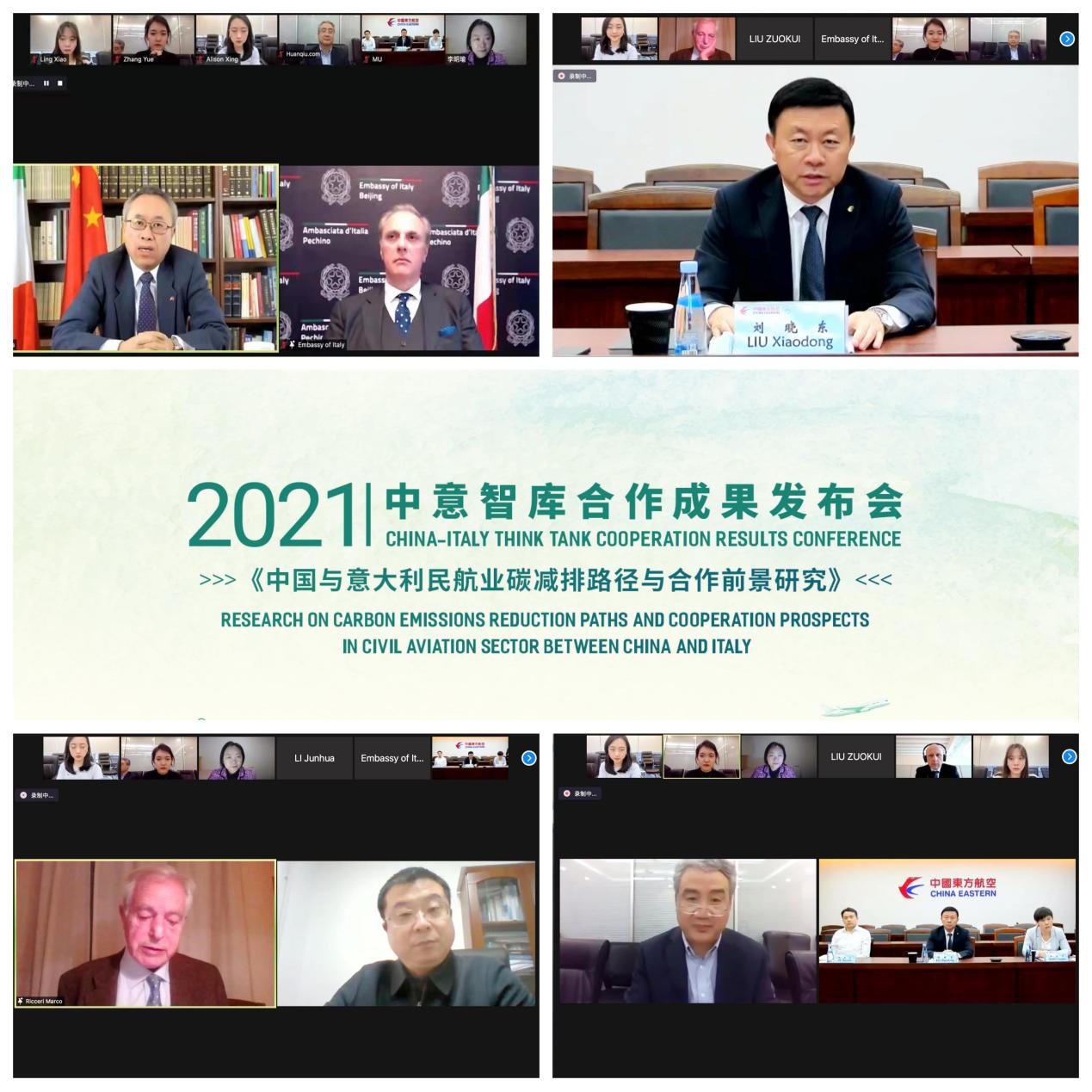Chinese, Italian think tanks release research report on carbon neutrality in civil aviation
11-19 AP NEWS
Chinese and Italian think tanks and Chinese news portal Global Times Online held a virtual event to release a research report on achieving carbon peak and carbon neutrality in the civil aviation sector between China and Italy on Nov. 15.

At the event, the Institute of European Studies of the Chinese Academy of Social Sciences (CASS), and Italy’s Institute of Political, Economic and Social Studies (Eurispes) issued the report titled “Research on Carbon Emissions Reduction Paths and Cooperation Prospects in Civil Aviation Sector between China and Italy,” the first international study focusing on emission peak and carbon neutrality of the aviation industry in both China and Italy. The report is available in Chinese, English and Italian.
As an advocate and practitioner of “green flights” in China, China Eastern Airlines Co., Ltd. (CEA), was one of the main targets of the study and provided support for the study.
Li Junhua, Chinese Ambassador to Italy, and Luca Ferrari, Italian Ambassador to China, attended the event and delivered respective speeches via video link, which marked the first online dialogue between the two ambassadors after the G20 Summit in Rome last month.
Luca Ferrari said actively responding to climate change and achieving carbon neutrality are the consensus of the overwhelming majority of countries, adding that the international community should strengthen coordination and cooperation and take more rapid and effective actions in this regard.
Calling CEA his favorite Chinese airline, the ambassador said the company’s active participation in researches on carbon emission reduction could better promote the implementation of solutions for reducing carbon emissions.
Li Junhua said China has stayed committed to a green and low-carbon path to development, and rolled out various pragmatic measures, including an action plan for peaking carbon dioxide emissions before 2030, laying out a clear timetable and roadmap. He added that China is now systematically moving forward toward its goals of peaking carbon dioxide emissions and achieving carbon neutrality.
As the civil aviation sector needs to reduce carbon emissions through scientific thinking and innovative solutions, the report jointly issued by China and Italy is both necessary and timely and will significantly contribute to the low-carbon development of the sector, Li noted.
Liu Xiaodong, director of Brand Management Department of China Eastern Air Holding Co. Ltd., delivered a speech at the event as a representative of the civil aviation sector. Liu pointed out that CEA participated in a case study conducted between China and Italy last year, namely, “the role of Cooperation between China and Italy in the civil aviation sector in the development of the cultural tourism of the two countries in the context of the Belt and Road Initiative,” which was included into the Annual Development Report of Italy (2020-2021) issued by the CASS.
This year marks the 10th anniversary of CEA’s launch of flights between China and Italy and the second time for the airline’s participation in think tank cooperation between the two countries, Liu said.
According to Liu, at the first North Bund International Aviation Forum 2021, which was hosted by CEA and attended by over 150 international experts in early November in Shanghai, 20 corporations in the aviation sector launched a carbon reduction cooperation initiative for the global aviation sector.
This year’s joint research studies typical Chinese and Italian institutions and enterprises, including CEA, ENAV S.p.A., and ITA Airways. It compares the paths of carbon reduction in the civil aviation sector between China and Italy regarding the international environment, technological innovation and carbon market development. It also attempts to map out the future cooperation between the Chinese and Italian civil aviation industry in green and sustainable development.
